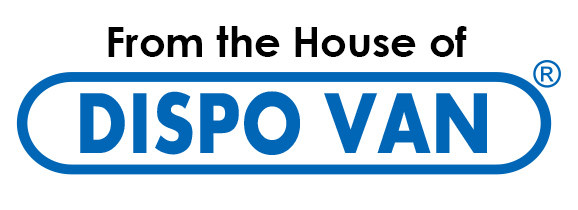

Insulin is a key hormone regulating carbohydrate metabolism in mammals including human beings. This hormone is produced by the pancreas and it regulates the use of glucose for body functions and maintains its equilibrium in the blood.
Normally the pancreas produces and releases small amounts insulin to the blood continuously. The amount of release increases proportionately in order to maintain an optimum level of blood glucose at every point of time.
In fact, each cell of our body requires glucose for functioning, which is received from the circulating blood. Glucose is produced by the digestion of food we eat and hence its concentration in the blood surges after we have food.
The blood glucose level is kept under normal level by the conversion of extra glucose to a storage form of sugar called glycogen which gets stored in the liver. During increased activity, when more glucose demand is there from the body cells, glycogen gets converted to glucose again.
The insulin facilitates the storage process of glucose in the form of glycogen and hence acts as a critical molecule in the day-to-day activities of every human being. Inadequacy or absence of insulin will result in persistent high blood glucose level, a condition called diabetes.
High blood glucose is generally associated with symptoms like increased thirst, fatigue, numbness, blurred vision, constant infection, tingling in the hands and legs, slow healing of external injuries such as bruises or cuts, etc. Prolonged diabetes leads to complicated illness and coma.
People who are not producing insulin in the required quantity develop diabetes. Basically, there are two general types of diabetes. Type I or juvenile-onset diabetes is the severe type in which the body does not produce any insulin.
The Type I diabetics are subjected to insulin therapy, in which insulin is injected into their body three to four times daily. The dosage of insulin is determined based on the concentration of glucose in the blood of the individual.
Type II diabetes on the other hand, begins in adults who are middle-aged or older. The Type II diabetics produce insulin but at an inadequate amount or in some cases the body cells of these individuals do not recognize the insulin in the blood and act as if there is no insulin. Type II diabetes can be managed even without insulin therapy through controlled diet, regular exercise, etc. But some of them may have to go for insulin therapy, depending on the severity of the case.
The credit of insulin treatment for diabetes goes to Frederick Banting and Charles Best of the University of Toronto, who discovered the therapy during the 1920s. Until the 1980s, animal insulin, particularly porcine was in use for the treatment of the diabetics. From the 1980s onwards, recombinant human insulin was introduced and a majority of the diabetics under insulin treatment started using this. Eventually, production of animal insulin was almost stopped. Human insulin is now produced by the common bacterium, Escherichia coli at large and also by yeast to a smaller extent, using recombinant DNA technology or genetic engineering technique.
Insulin Therapy isn’t a Cure for Diabetes
Contrary to the popular notion, insulin therapy is not the end of the road for the diabetic. Of course, insulin therapy needs to be continued once started but can be safely prolonged for years. It is a natural approach for treating diabetes but it cannot provide a cure for the disorder.
Insulin Injections aren’t Painful Anymore
There is a general belief that the insulin injection is painful. Moreover, smart delivery systems like insulin pen with micro needle system with minimal poking injury, insulin patches that adhered to the skin for transdermal delivery of the hormone have eased the process of insulin intake during the recent years. Still advanced insulin delivery systems comprise app enabled control release systems which sense the body requirement and release the relevant dosage of the hormone via painless micro needles or skin patches. Pricekeeda Hindi
Insulin has evolved a lot over the years from its original form extracted from pigs or cattle during the 1920s to recombinant human insulin produced in bulk using genetically engineered bacteria at the industrial scale, which is more compatible than the animal insulin of the past.
Insulin these Days Can be Tailor Made
There are modified forms of human insulin called ‘insulin analog’, which are tailor made according to the convenience of the patient’s requirement. They differ in their activity pattern and duration of activity. The rapid-acting insulin reaches the blood within 15 minutes, shows peak activity at 30-90 minutes, and can be active for five hours.
Insulin can Remain in the Blood for 14-20 hours once Injected
Short-acting insulin is the second type which reaches the blood within 30 minutes, attains peak activity in about two to four hours later and remains in the blood for 4 to 8 hours. The third form of insulin called intermediate-acting insulin takes 2 to 3 hours to reach the blood, shows peak activity during 4 to 14 hours of injection and remains active for 14 to 20 hours. Still another type of insulin called long-acting insulin requires 6 to 14 hours for start working, shows a small peak immediately and shows persistent activity for 20 to 24 hours.
Insulin should always be kept Refrigerated
Insulin needs proper storage conditions. It is mandatory to keep insulin refrigerated even if the vial is not opened. Insulin should never be allowed to freeze. Once opened, insulin should not be kept in storage for more than 28 days. Even if it’s unopened, it needs to be kept cool in the refrigerator. Never let it freeze. Once insulin has been opened, it shouldn’t be kept for more than 28 days. Use of insulin past expiry date is strictly prohibited.


